Choosing the right high bay industrial lights can significantly impact your workspace’s productivity and energy efficiency. At PacLights, we understand the importance of proper illumination in industrial settings.
This guide will walk you through the essential factors to consider when selecting high bay lighting for your facility. We’ll explore various types of high bay lights and help you make an informed decision that meets your specific needs.
What Are High Bay Industrial Lights?
Definition and Purpose
High bay industrial lights are powerful lighting fixtures designed for spaces with high ceilings (typically 20 feet or higher). These lights provide adequate illumination in large, open areas where traditional lighting solutions fall short. The primary purpose of high bay lighting is to deliver bright, uniform illumination across expansive spaces, ensuring safety, productivity, and efficiency in industrial environments.
Common Applications
You’ll find high bay lights in various industrial and commercial settings:
- Warehouses: To illuminate vast storage areas and facilitate safe material handling.
- Manufacturing plants: To ensure precise visibility for complex assembly processes.
- Sports arenas and gymnasiums: To provide even lighting for players and spectators.
- Retail spaces: Particularly those with high shelving, to showcase products effectively.
Key Features to Look For
When selecting high bay industrial lights, several features stand out as important:
Lumen Output and Efficiency
Medium Lumens (21,000-35,000) are by far the most popular lumen range for high bay lights. Lights in this category are often used for large scale operations such as warehouses. Energy efficiency is equally important; look for lights with high lumens per watt ratios to minimize operational costs.
Durability and Protection
Industrial settings demand robust construction. Opt for lights with high IP ratings to withstand dust, moisture, and potential impacts. An IP65 rating or higher ensures protection against dust and water jets.
Color Quality
Color temperature and Color Rendering Index (CRI) play significant roles in visual comfort and task accuracy. A color temperature around 5000K mimics daylight and suits most industrial applications. A CRI of 80 or above ensures accurate color rendering, which is important for quality control and safety.
Beam Angle and Distribution
Consider the beam angle and light distribution. Wide beam angles (120 degrees or more) suit general illumination, while narrower beams can highlight specific areas or create focused work zones.
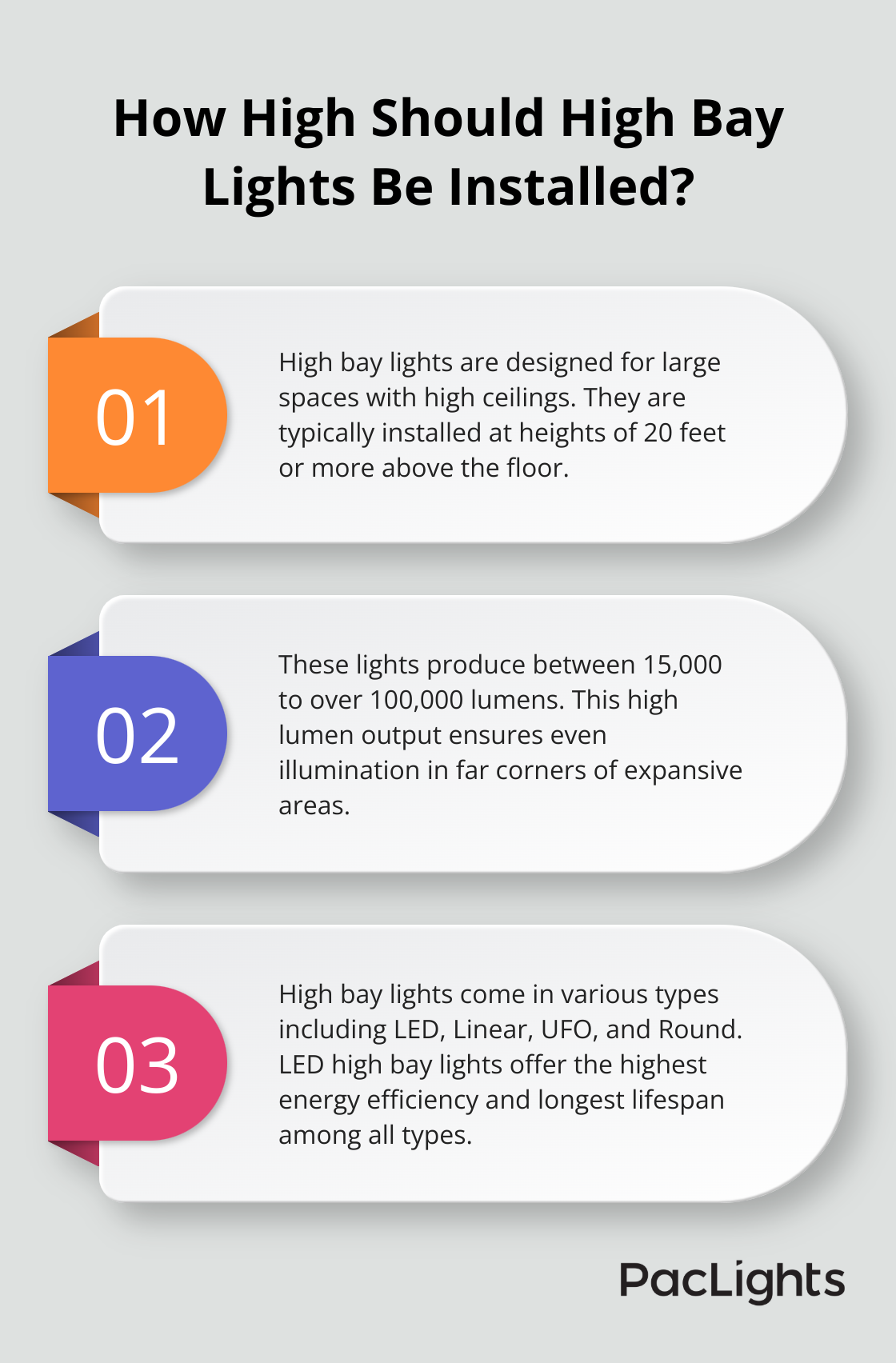
Understanding these key aspects of high bay industrial lights will equip you to make an informed decision. In the next section, we’ll explore the specific factors to consider when choosing the right high bay lights for your facility.
What Factors Matter Most in High Bay Lights?
Lumen Output and Efficiency
The cornerstone of effective high bay lighting is lumen output. For most industrial applications, try to select fixtures that deliver between 21,000 and 35,000 lumens. This range typically provides sufficient illumination for warehouses and large commercial spaces.
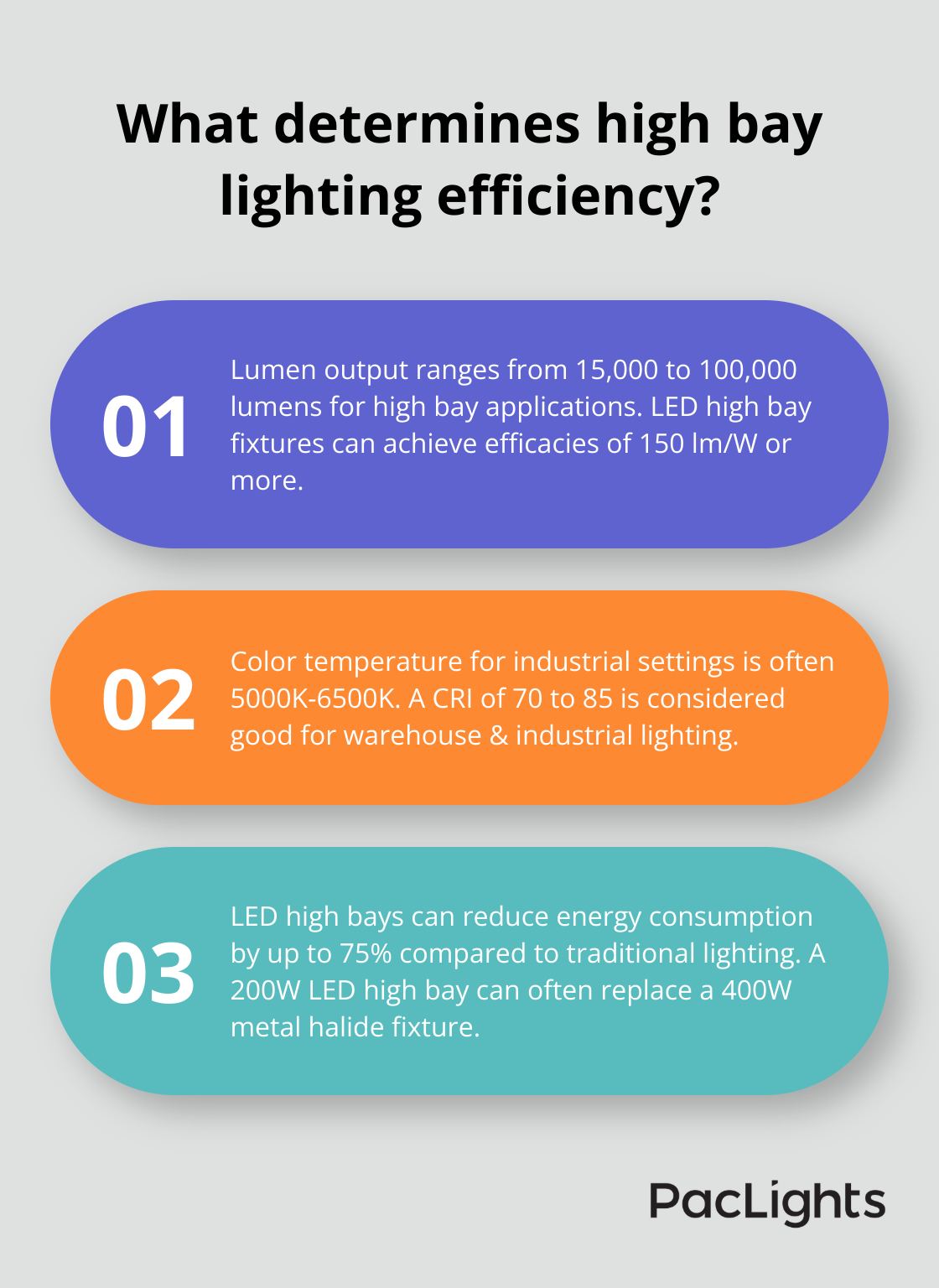
Raw lumen output, however, doesn’t tell the whole story. Efficiency (measured in lumens per watt) plays an equally important role. Try to find fixtures that offer at least 130 lumens per watt. This level of efficiency ensures maximum light output for your energy input, which translates to lower operational costs over time.
Color Quality
Color temperature and Color Rendering Index (CRI) significantly impact the quality of light in your space. For industrial settings, a color temperature of 5000K often proves ideal. This cooler temperature mimics daylight, which promotes alertness and improves visibility.
For CRI, try to select a rating of 80 or higher. A high CRI ensures colors appear true to life, which is essential for quality control processes and overall workplace safety. Some tasks may require even higher CRI ratings (90+), so consider your specific needs when making your selection.
Durability in Demanding Environments
Industrial environments can be harsh on lighting fixtures. That’s why durability (often indicated by an IP rating) is critical. For most industrial applications, select fixtures with an IP65 rating or higher. This rating ensures protection against dust and water jets, making the lights suitable for a wide range of industrial settings.
The initial cost of a more durable fixture often pays off in reduced maintenance and replacement costs over time. Don’t compromise on durability – it’s an investment in the long-term performance of your lighting system.
Beam Angle and Light Distribution
The beam angle and light distribution of your high bay lights can significantly impact the effectiveness of your lighting setup. Wide beam angles (120 degrees or more) suit general illumination, while narrower beams can highlight specific areas or create focused work zones.
Consider the layout of your space and the tasks performed in different areas when selecting beam angles. Some fixtures offer adjustable beam angles, providing flexibility for changing needs.
Energy Efficiency and Cost Savings
Energy efficiency is a key factor in choosing high bay lights. LED lighting is now more efficacious than any of the conventional lighting technologies with room to still improve. This improvement in energy efficiency directly translates to lower utility bills and a smaller carbon footprint.
When evaluating energy efficiency, consider the total cost of ownership, including installation, maintenance, and energy savings. While more efficient fixtures may have a higher upfront cost, they often provide significant savings over their lifespan.
The next chapter will explore the different types of high bay lights available, helping you narrow down your options based on these important factors.
Which High Bay Light Is Right for You?
LED High Bay Lights: The Energy-Efficient Powerhouse
LED high bay lights have become the top choice for many industrial and commercial spaces. They offer superior energy efficiency, with some models providing up to 200 lumens per watt. This translates to significant energy savings over time. A 150W LED high bay can replace a 400W metal halide fixture while delivering the same or better light output.
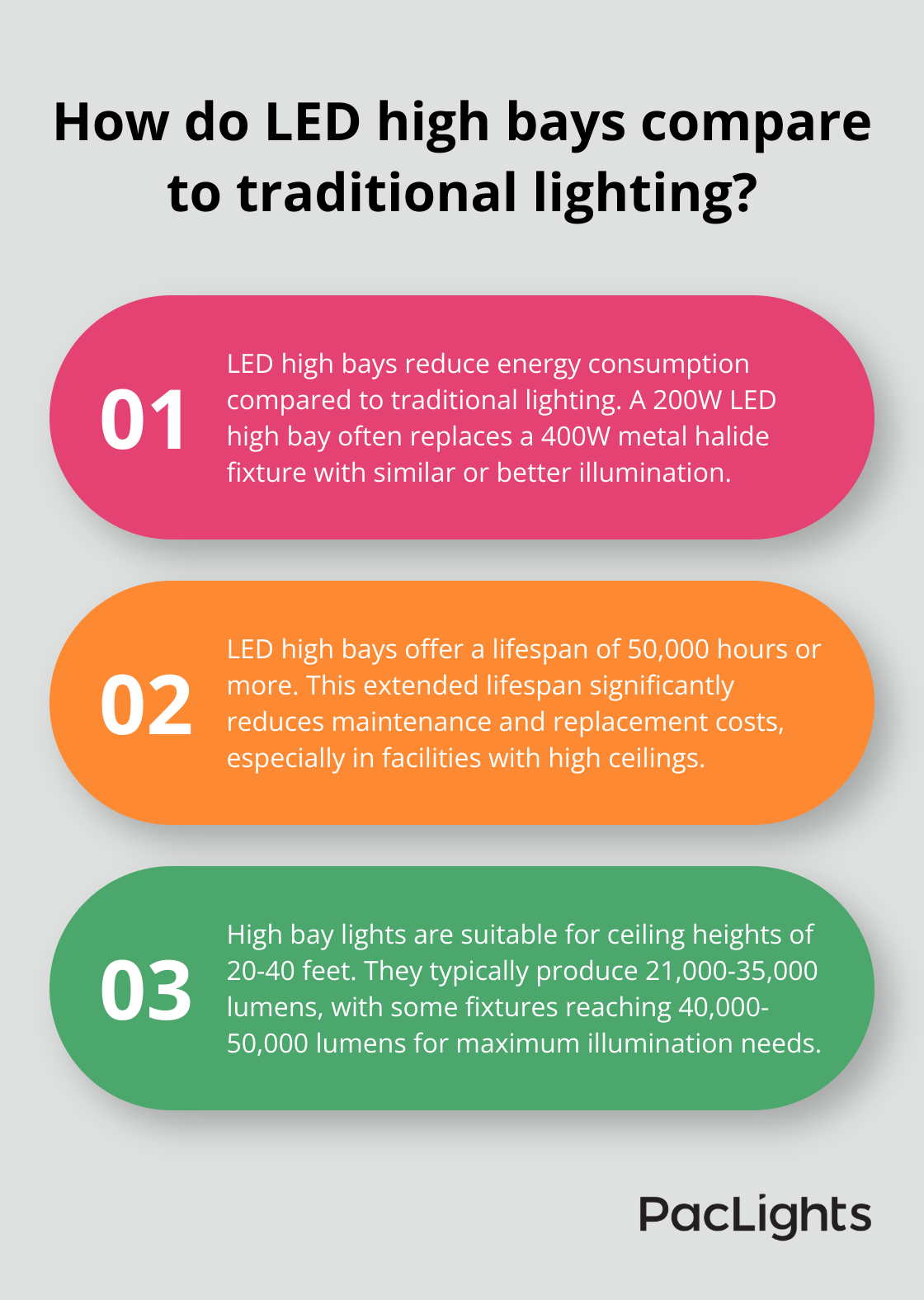
LEDs also boast an impressive lifespan, ranging from 50,000 to 100,000 hours. This longevity results in less frequent replacements and lower maintenance costs. Many facilities report up to 75% reduction in lighting-related energy costs after switching to LED high bays.
UFO High Bay Lights: Compact and Powerful
UFO high bay lights, named for their distinctive shape, are a popular subset of LED high bays. These fixtures excel in heat dissipation, which contributes to their long lifespan and consistent performance.
UFO high bays suit spaces with limited ceiling access or where a sleek, modern aesthetic is desired. Their compact design makes them ideal for areas with height restrictions or where minimizing visual clutter is important.
Linear High Bay Lights: Versatile Illumination
Linear high bay lights offer a different approach to illumination. These elongated fixtures provide a wide, even spread of light, making them excellent for spaces where uniform illumination matters. They’re often the preferred choice for areas with lower ceilings (around 15-25 feet) or in applications where glare reduction is a priority.
Many facilities (such as automotive workshops and assembly lines) favor linear high bays for their ability to provide consistent lighting across large areas. Some models offer the flexibility of linking multiple fixtures together, allowing for customized lighting layouts.
Round High Bay Lights: Traditional Design, Modern Performance
Round high bay lights blend traditional aesthetics with modern LED technology. These fixtures are often chosen for their familiar appearance, making them a popular choice for retrofit projects where maintaining a consistent look is important.
Despite their traditional shape, modern round high bays can match or exceed the performance of other LED options. They’re particularly effective in spaces with high ceilings (30 feet or more) due to their wide beam angles and powerful output.
When selecting the right high bay light for your space, consider factors like ceiling height, required light distribution, and any specific task lighting needs. The most efficient fixture isn’t always the best choice if it doesn’t meet your specific requirements.
Selecting the right high bay industrial lights impacts productivity, safety, and operational costs in your facility. We explored key factors such as lumen output, energy efficiency, color quality, durability, and light distribution. Each element plays a vital role in creating an optimal lighting environment for your specific needs.
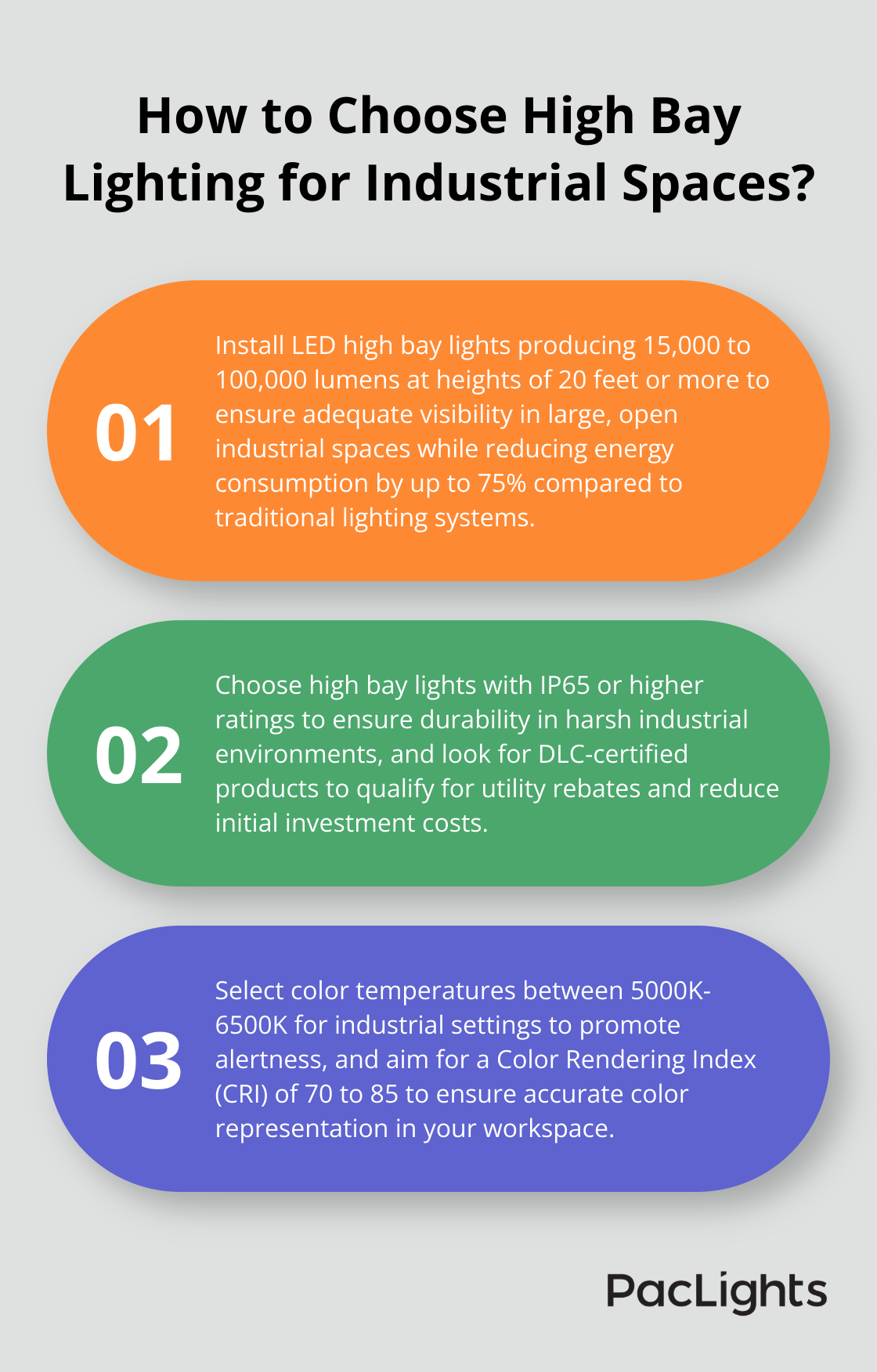
LED technology provides significant energy savings, longer lifespans, and improved light quality compared to traditional lighting systems. Many facilities report substantial reductions in energy costs and maintenance requirements after switching to LED high bays. The importance of choosing the right high bay light affects everything from worker performance and safety to energy consumption and maintenance costs.
At PacLights, we offer a wide range of high bay industrial lights designed to meet diverse industrial needs. Our products combine energy efficiency, durability, and advanced features (like optional daylight and motion controls). We provide free lighting layout designs and ROI assessments to help you make the best choice for your space.


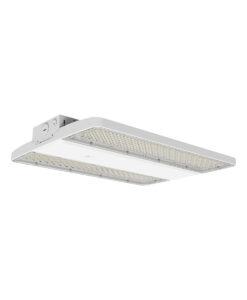
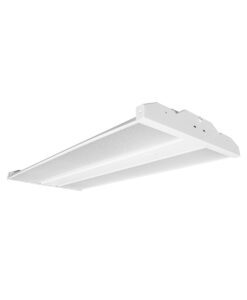
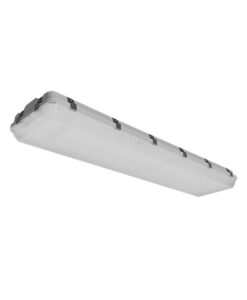
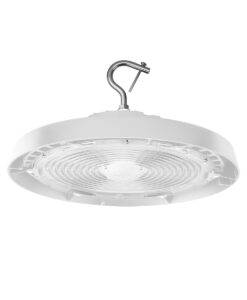
Disclaimer: PacLights is not responsible for any actions taken based on the suggestions and information provided in this article, and readers should consult local building and electrical codes for proper guidance.